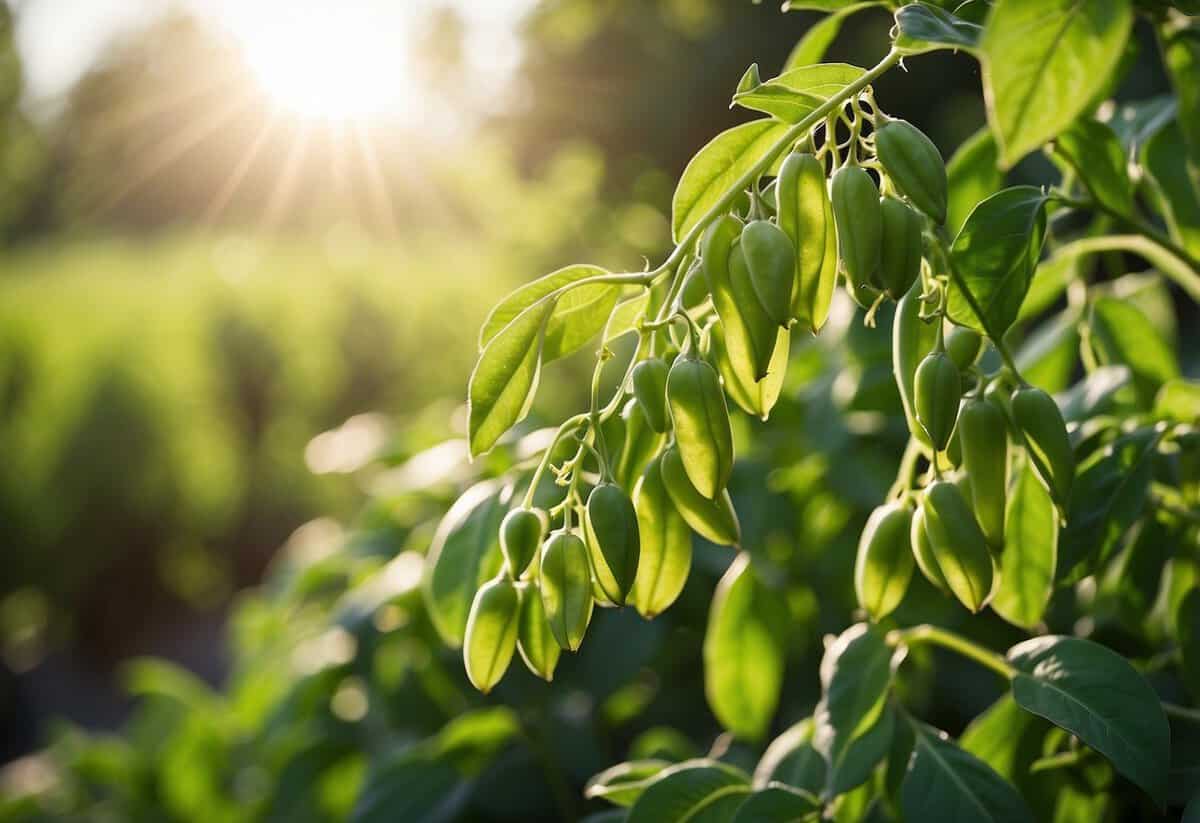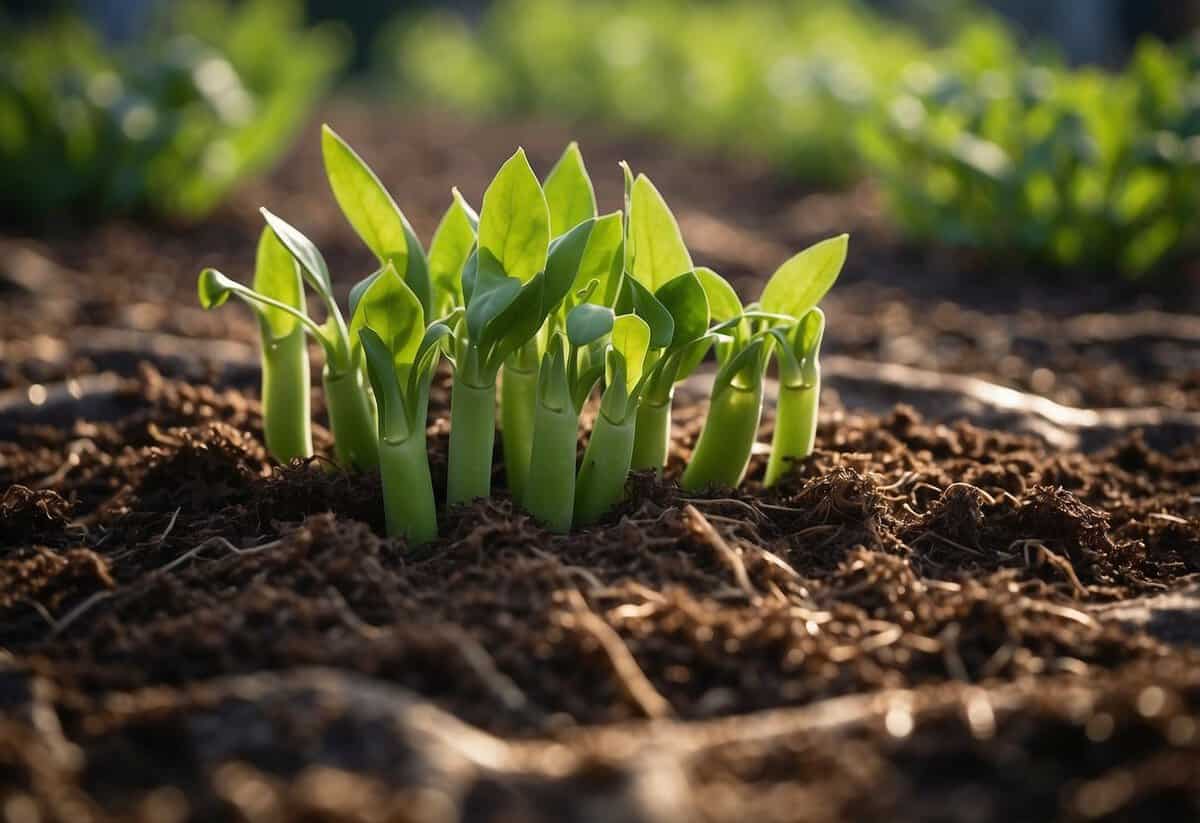Snap Peas Garden Tips: Easy Ways to Grow and Harvest
Snap peas are a delightful addition to any garden, bringing both beauty and a tasty harvest. They are known for their sweet flavor and crisp texture, making them a favorite among gardeners and cooks alike. Growing these peas can be a fun and rewarding experience, even if you’re new to gardening.

Wondering how to start your own snap pea garden? You’ll find that with a little preparation and attention, snap peas can thrive in various climates and conditions. This article will guide you through the essential tips and tricks to ensure a bountiful crop of snap peas, ready for your table.
1) Choose a Sunny Spot

Snap peas need lots of sunlight to grow well. Find a spot in your garden where they can get at least six to eight hours of direct sun each day.
Sunlight helps the plants produce sweet and tender peas. Without enough sun, the plants may become weak and produce fewer peas.
Choosing the right spot from the beginning will lead to a healthier and more productive pea plant.
2) Use Well-Draining Soil

Snap peas love well-draining soil. It helps prevent root rot and ensures your plants grow strong and healthy.
Prepare your garden bed by loosening the soil. This can be done with a garden fork or tiller.
If your soil is heavy or clay-like, add organic matter like compost or aged manure to improve texture. Snap peas thrive in this kind of soil.
For more details, visit GardenMoz’s tips on soil preparation.
3) Plant in Early Spring

Plant your snap peas in early spring for the best results. The young seedlings can handle cool weather and a bit of frost.
For locations with cold winters, planting in early spring allows peas to mature before the summer heat hits. Be sure to sow the seeds about 1 inch deep in well-drained soil.
Snap peas love full sun, so choose a sunny spot in your garden. This ensures they get the warmth and light they need to grow strong and healthy.
4) Space Seeds Properly

When planting snap peas, it’s important to space the seeds correctly. This helps the plants grow strong and healthy. For best results, plant the seeds five inches apart.
Consider using a wide row or “block” method. Plant your peas in a 12-18 inch wide row and space them six inches apart. This allows plenty of room for air to flow.
5) Keep Soil Moist

Water your snap peas regularly.
The soil should be evenly moist but not waterlogged.
A watering can or nozzle is useful for gentle watering.
Dry soil can stress the plants and reduce your harvest.
Mulching with grass clippings or straw helps retain moisture.
This simple practice can make a huge difference in your pea garden.
For more tips on growing snap peas, visit The Spruce.
6) Mulch to Retain Moisture

Using mulch is a great way to help your snap pea garden thrive. It keeps the soil evenly moist without getting it waterlogged.
Organic mulch, like straw or shredded leaves, works best.
Spreading a layer around your pea plants also helps to suppress weeds and moderate soil temperature.
This simple step can make a big difference in your pea harvest.
7) Provide Trellises for Support

Snap peas grow best with proper support. A trellis keeps your plants upright and ensures good airflow.
Simple setups like bamboo posts and twine are easy to make. For a different style, you might like using nylon netting.
Make sure to space your stakes evenly and secure the plants as they grow. This will help you achieve a healthy and productive snap pea garden.
8) Harvest Pods Regularly

Harvesting snap peas regularly encourages more pods to grow. You should pick them every day or at least every other day. When you allow pods to stay on the plant too long, they can slow down the production of new ones.
Look for bright green pods that are full but not overly swollen. These are at their peak flavor and texture. Regularly checking your plants ensures you don’t miss any ripe pods.
Remember to handle the vines gently to avoid damaging the plants. Snapping off the pods carefully helps keep the plants productive and healthy.
9) Watch for Pests

Keep an eye out for common pests like aphids and spider mites. These tiny bugs can cause a lot of damage to your snap peas.
Inspect your plants regularly, especially the undersides of leaves where pests like to hide. If you spot any, remove them by hand or use a gentle spray of water.
Consider using natural predators like ladybugs to help control pest populations. You can also use insecticidal soap as a last resort if the infestation gets out of hand.
10) Add Compost for Nutrients

Using compost in your garden beds helps your snap peas thrive. Compost adds essential nutrients to the soil, which promotes healthier and stronger plants.
When preparing your soil, mix in a generous amount of compost. Aim for a light and airy consistency. This helps with drainage and makes it easier for snap pea roots to spread out and grow.
Snap peas prefer soil that’s rich in organic matter. Adding compost regularly ensures they get a continuous supply of the nutrients they need. This can lead to a more bountiful harvest of fresh, delicious snap peas.
Preparing Your Snap Peas Garden

To get a healthy and bountiful harvest of snap peas, you need to pay attention to selecting an ideal garden location and preparing the soil properly.
Choosing The Right Location
Snap peas thrive in full sun and need well-draining soil. Choose a sunny spot in your garden where they can get at least six to eight hours of sunlight daily. A location with morning sun and some afternoon shade can also work well.
Make sure your garden spot isn’t subject to strong winds that can damage fragile pea plants. You might want to consider setting up trellises or supports right from the beginning. This helps peas climb and can protect them from the wind. Planting near taller plants or creating a windbreak with hedges or fences can also be beneficial.
Soil Preparation
Focus on getting the soil ready since snap peas grow best in rich, well-drained soil. Loosen the top six inches of soil by tilling or turning it over with a garden fork. Remove rocks, weeds, and debris to create a clean planting bed.
Snap peas prefer soil with a pH of 5.5 to 7.0. You might want to test your soil’s pH and adjust it as needed by adding lime to raise the pH or sulfur to lower it.
Improve the soil’s texture by adding compost or well-rotted manure. These organic materials help with drainage and provide essential nutrients. Snap peas don’t need a lot of fertilizer, but enriching the soil can give them a good start. Before planting, soak pea seeds overnight in room-temperature water to speed up germination.
Planting Snap Peas

To get a bountiful snap pea harvest, you need to focus on selecting the right seeds and using proper sowing techniques. Here’s how to give your snap peas the best start in your garden.
Seed Selection
Choosing high-quality seeds is crucial. Look for disease-resistant varieties like ‘Sugar Snap’ and ‘Cascadia’. These types grow well and produce sweet, crunchy pods.
Check the seed packaging for freshness. Old seeds may not germinate properly. Store seeds in a cool, dry place until you’re ready to plant.
Opt for organic or untreated seeds if you prefer a natural approach. These seeds haven’t been treated with chemicals, making them great for organic gardening.
Sowing Techniques
Plant your snap peas in early spring, as soon as the soil is workable. The soil should be well-draining and enriched with compost or manure. This helps provide essential nutrients.
Spacing: Sow seeds 1 to 2 inches apart and 1-1.5 inches deep. This spacing allows enough room for vine growth and proper airflow.
Rows: Plant peas in single or double rows. Single rows work well in smaller gardens, while double rows can maximize space in larger areas.
Water thoroughly after planting but avoid waterlogging the soil. Consistent moisture is key for germination but too much water can cause seeds to rot. Adding mulch can help retain soil moisture and reduce weeds.
Provide support with trellises or stakes once the vines start to grow. This keeps them off the ground and helps prevent diseases. So, with careful seed selection and mindful sowing techniques, you can achieve a healthy, productive snap pea crop.
Caring For Your Snap Peas

Taking care of your snap peas involves proper watering and managing pests and diseases to ensure healthy growth.
Watering Tips
Snap peas need consistent moisture. You should water them gently, ensuring the soil is moist but not soaked. Aim to keep the soil evenly moist throughout their growing season. A good rule of thumb is to water them about 1 inch per week. If rainfall is insufficient, supplement with additional watering.
Use a soaker hose or drip irrigation to avoid wetting the leaves, which can help prevent fungal diseases. Watering early in the day allows the plants to dry off before nightfall. Mulching around the plants can help retain moisture and keep the soil cool.
Pest and Disease Management
Keeping snap peas healthy involves monitoring for pests and diseases. Common pests include aphids, pea weevils, and spider mites. You can control them using insecticidal soap or neem oil. Introducing beneficial insects like ladybugs can also help manage pests naturally.
Fungal diseases such as powdery mildew are common in snap peas. To prevent these, ensure proper spacing for air circulation and avoid overhead watering. Remove any infected plants to prevent the spread of disease. Rotating crops each year can also help reduce disease risk.
Keeping a close eye on your plants and acting quickly at the first sign of trouble will ensure a healthy and bountiful harvest.







